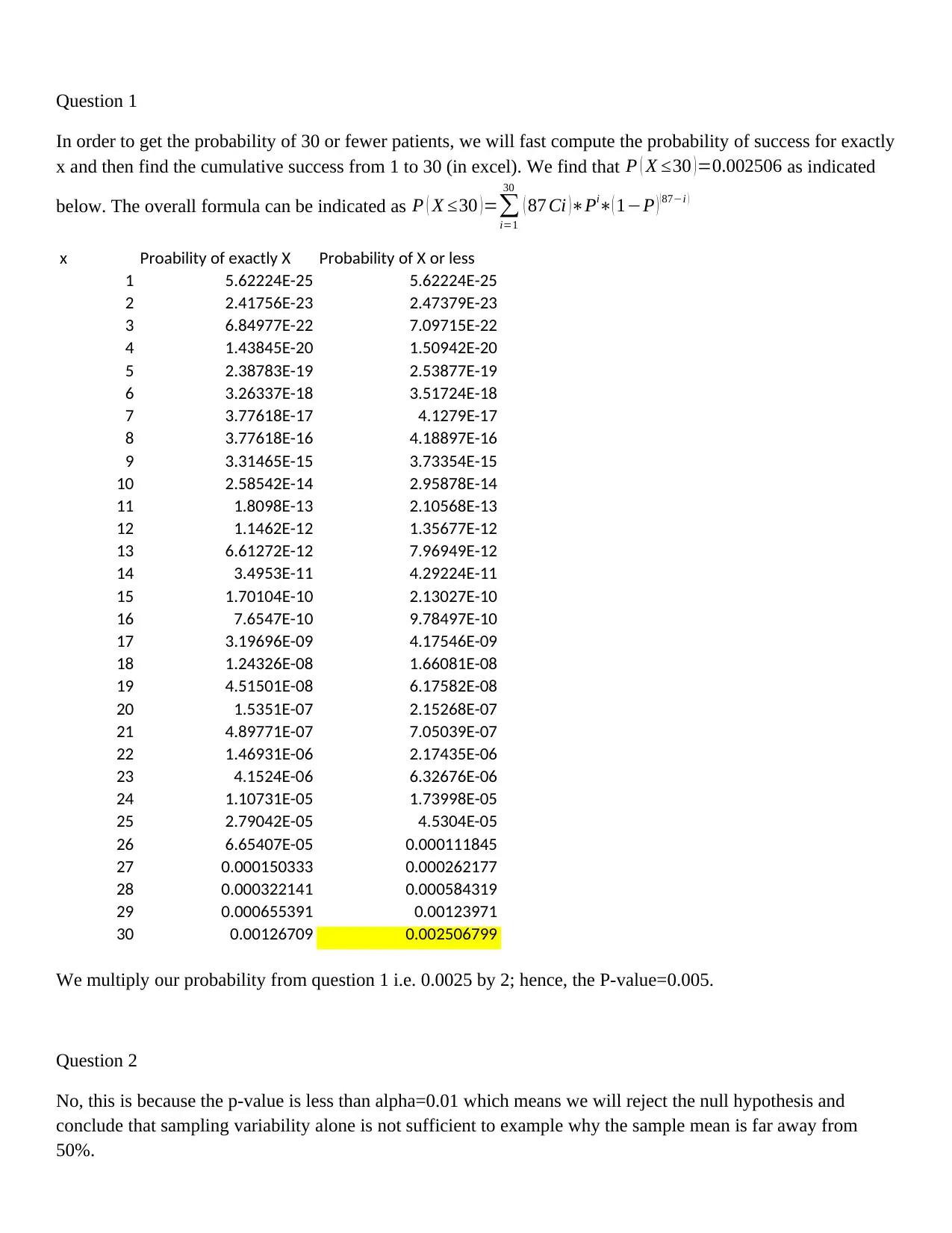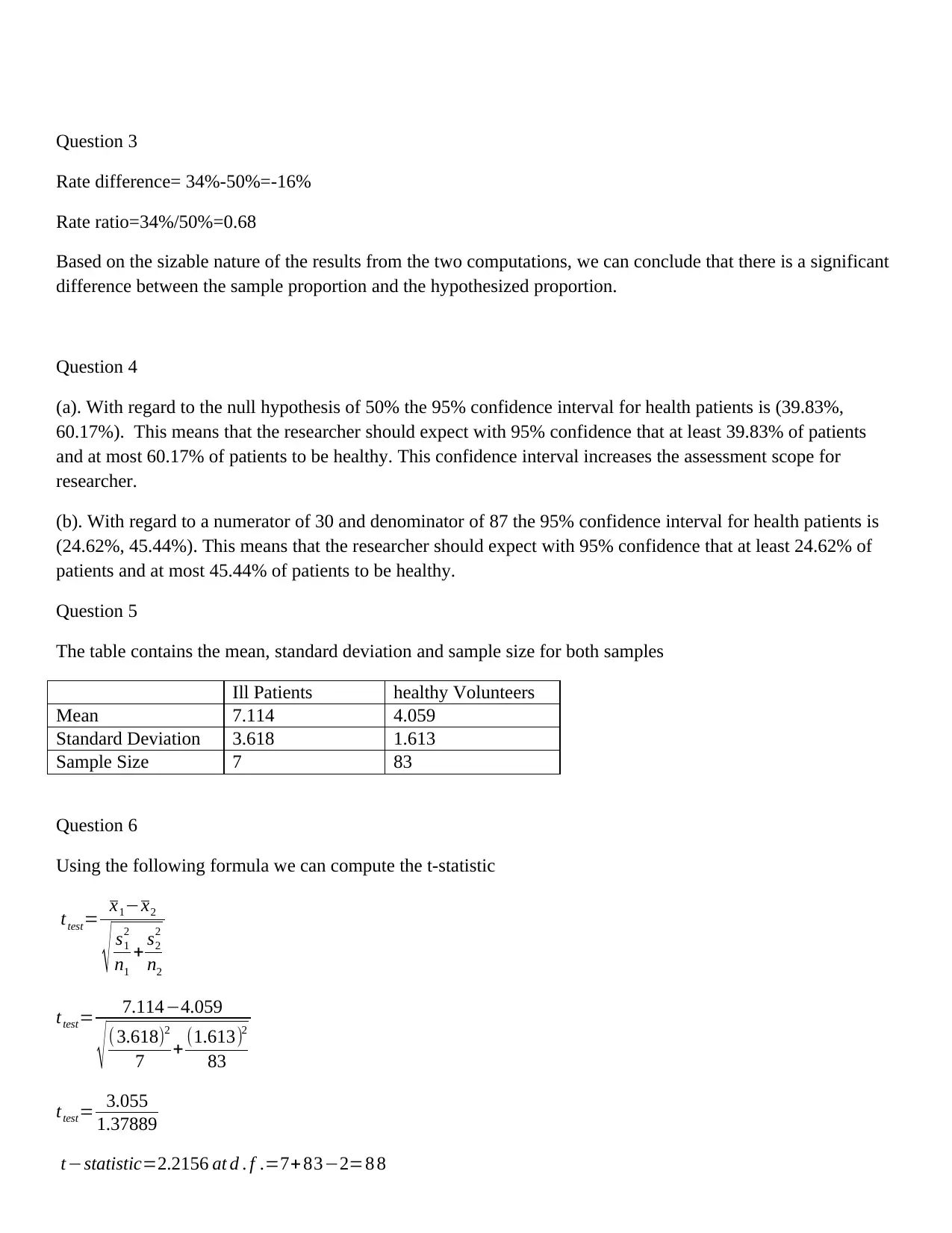HSCI 2117: Problem Set 5 - Hypothesis Tests Part 1 Solution & Analysis
VerifiedAdded on 2023/01/19
|3
|723
|88
Homework Assignment
AI Summary
This document provides a comprehensive solution to the HSCI 2117 Problem Set 5 assignment, focusing on hypothesis tests using the Smart Pill dataset. The solution includes detailed calculations and explanations for each question. Question 1 calculates the probability of 30 or fewer patients with a stomach pH below 2.5 using binomial distribution, resulting in a p-value of 0.002506. Question 2 concludes that the null hypothesis is rejected as the p-value is less than alpha=0.01. Question 3 computes rate difference and rate ratio. Question 4 determines the 95% confidence interval. Question 5 provides the mean, standard deviation, and sample size for ill patients and healthy volunteers. Questions 6 to 8 calculate the t-statistic, p-value, and confidence intervals for the difference in means using the t-test. Question 9 rejects the null hypothesis based on the p-value and suggests that the median may be a better measure than the mean if the data is not normally distributed.
1 out of 3








![[object Object]](/_next/static/media/star-bottom.7253800d.svg)